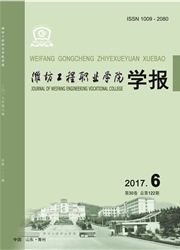

 中文摘要:
中文摘要:
目的:调查研究云南保山地区契丹后裔人群生活习惯与乙型肝炎之间的关系,找出其中的危险因素或保护因素,为开展保山地区契丹后裔人群乙型肝炎的防治工作提供科学依据。方法:采用对保山契丹后裔人群发放统一编制调查问卷,调查其生活习惯,并采集静脉血5 mL检测乙肝血清学指标,同时采用χ^2检验和Logistic回归分析契丹后裔人群生活习惯与乙型肝炎之间的关系。结果:325名契丹后裔中有10例HBsAg阳性,阳性率为3.07%,其中感染者均为男性。经单因素分析,性别、乙肝疫苗接种史、家庭年收入的差异具有统计学意义(P〈0.05),共用牙具、剃须刀(P=0.061)和文化程度(P=0.093)差异接近于有统计学意义。多因素分析表明,接种乙肝疫苗为保护性因素(P〈0.05),而家庭年收入高为HBV感染的易感因素(P〉0.05)。结论:应该加强对契丹后裔人群的健康教育,采取免疫预防措施,普及疫苗接种,保护易感人群,控制乙肝的感染和传播。
 英文摘要:
英文摘要:
Objective:To investigate the relationship between the living habits and HBV infection of Khitan descendants in Yunnan Baoshan, and find out the risk factors or protective factors, to provide scientific evidence for the HBV prevention and control works. Methods:The unified questionnaire survey were provided for researching Khitan descendants living habits. 5 mL serum samples were collected to test the hepatitis B serological markers. Chi-square test and Logistic regression were used to analysis the relationship between living habits and HBV infection of Khitan descendants. Results:10 cases were HBsAg positive in 325 Khitan descendants, the people whose HBsAg were positive were male. By factor analysis, gender was a possible risk factor for HBV infection. Sharing towels, razors(P=0.061), cultural differences (P=0.093) were close. History of hepatitis B vaccination, high annual family income was statistically significant (P〈0.05). Multivariate analysis showed that the hepatitis B vaccine was a protective factor (P〈0.05), and the annual income of the family was a susceptible factor of HBV infection (P 〉 0.05). Conclusion: We should strengthen the health education to the Khitan descendants, take the immune preventive measures, and popularize vaccination, protect susceptible populations, and control the spread of hepatitis B infection.
 同期刊论文项目
同期刊论文项目
 同项目期刊论文
同项目期刊论文
 期刊信息
期刊信息
